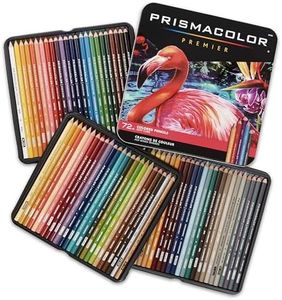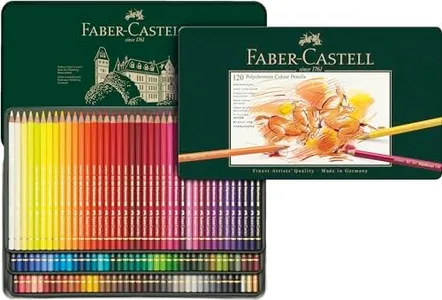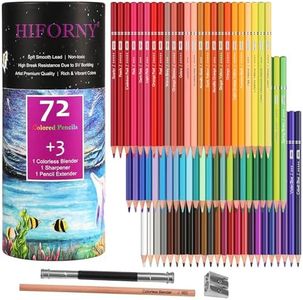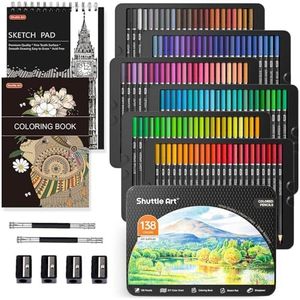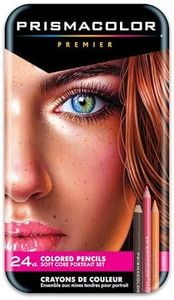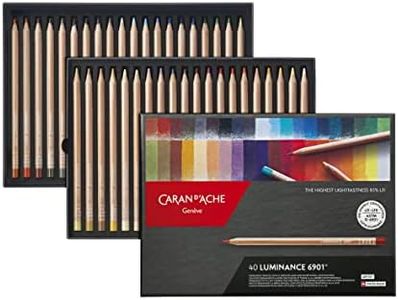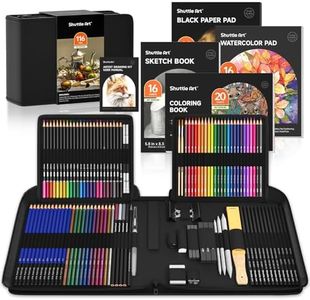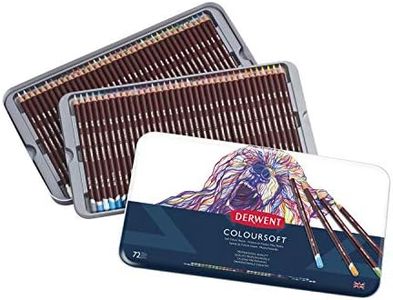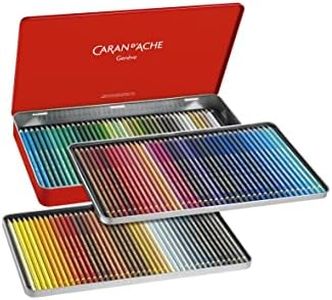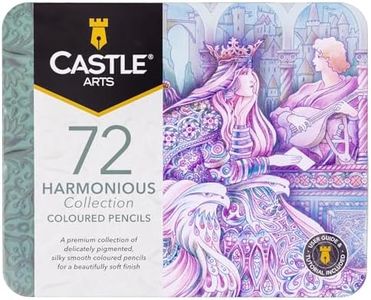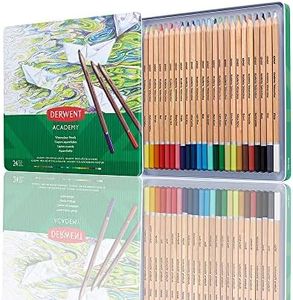We Use CookiesWe use cookies to enhance the security, performance,
functionality and for analytical and promotional activities. By continuing to browse this site you
are agreeing to our privacy policy
10 Best Colouring Pencils For Adults
From leading brands and best sellers available on the web.Buying Guide for the Best Colouring Pencils For Adults
Choosing colouring pencils as an adult can be a rewarding experience, whether it’s for professional artwork, adult colouring books, or casual relaxation. The best pencil for you will depend on your artistic ambitions, preferred techniques, and how you enjoy colouring. There are many options available, each with their own strengths. Understanding the main characteristics will help you select a set that fits your needs and supports your creativity.Core Material (Wax-based vs Oil-based)The core material of colouring pencils typically falls into two main categories: wax-based and oil-based. Wax-based pencils are common, softer, and generally easier to layer and blend, making them user-friendly for most adult colourists. Oil-based pencils are harder, can hold a sharper point longer, and are preferred for detailed work and fine lines. If you enjoy rich blending and soft transitions, wax-based might suit you best. For crisp detail or if you have a heavy hand and want minimal smudging, consider oil-based pencils.
Colour Selection and RangeThis refers to how many different colours are included in a set, ranging from basic sets of 12 up to large sets of 100 or more. Smaller sets are portable and less overwhelming but may require blending to achieve certain shades. Larger sets give you immediate access to a broad palette, which is ideal if you love exploring a variety of hues or doing detailed, colourful work. Think about the complexity of your colouring projects—if you prefer simple designs, a smaller set may suffice, but for intricate or realistic art, a larger range is helpful.
Pencil Hardness and SmoothnessThis spec describes how soft or hard the pencil core is, affecting how the pigment goes on the paper and how the pencil feels while you’re drawing. Softer pencils lay down a lot of colour easily and are great for blending, but may wear down faster. Harder pencils give lighter, controlled strokes good for fine detail but may be harder to blend. For those who like bold, vibrant coverage or blending, softer pencils work well. For neat lines or detailed work, harder pencils are preferable.
LightfastnessLightfastness is a measure of how well the colours resist fading when exposed to light over time. High lightfastness means the picture will stay vibrant longer, which is important if you plan to display or sell your finished pieces. This is less crucial if you colour mainly for relaxation and keep your work in a book or closed folder. Look for pencils that mention high lightfast ratings if longevity matters to you.
Ergonomics and Pencil SizeThis refers to the physical feel of the pencil in your hand, including its thickness, length, and shape (round, hexagonal, or triangular). Thicker pencils may be more comfortable for longer colouring sessions, while thinner pencils offer more precision. Some people prefer hexagonal or triangular barrels to prevent rolling and ensure a better grip. Your hand size and how long you plan to colour should guide your choice—choose a shape and size that feels comfortable and reduces fatigue.
Blendability and LayeringThis describes how well the pencils can be blended to create new colours or layered for depth. Good blendability lets you transition smoothly between shades, build up intensity, and create rich, complex artworks. Test or read about how easily each pencil type blends, especially if you enjoy complex colouring effects. If you prefer simple colouring, this may be less important.
